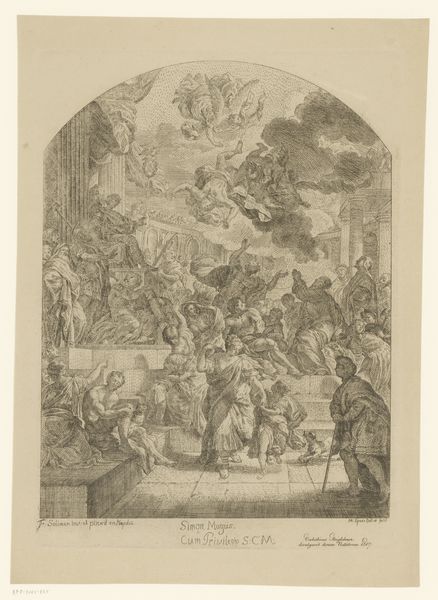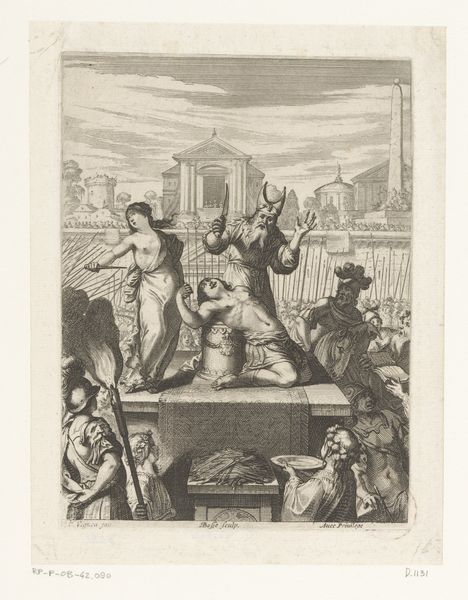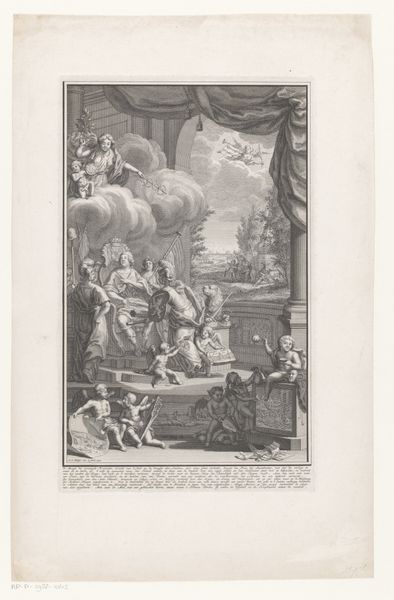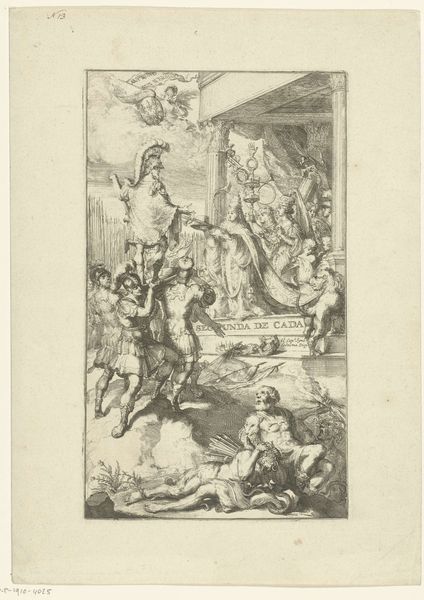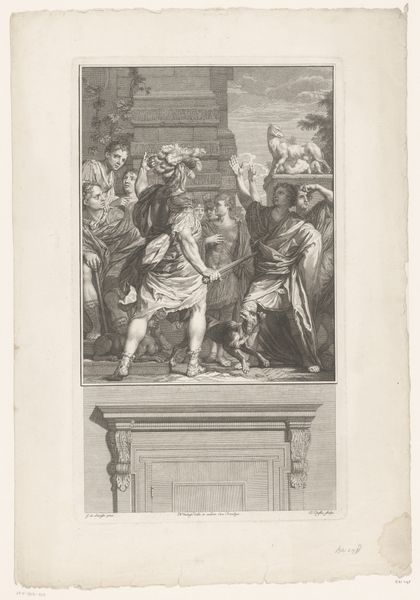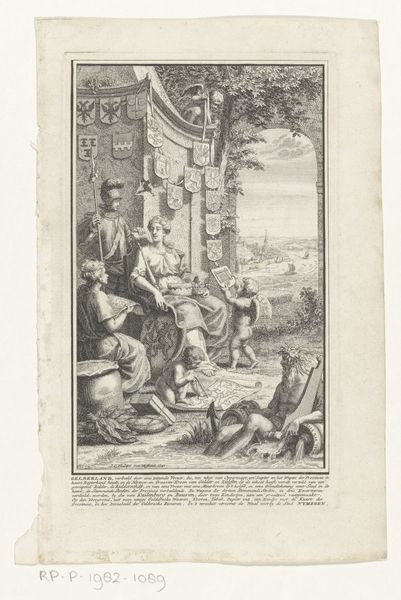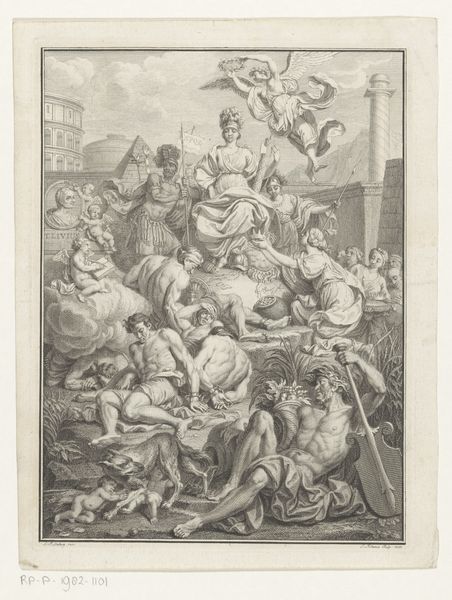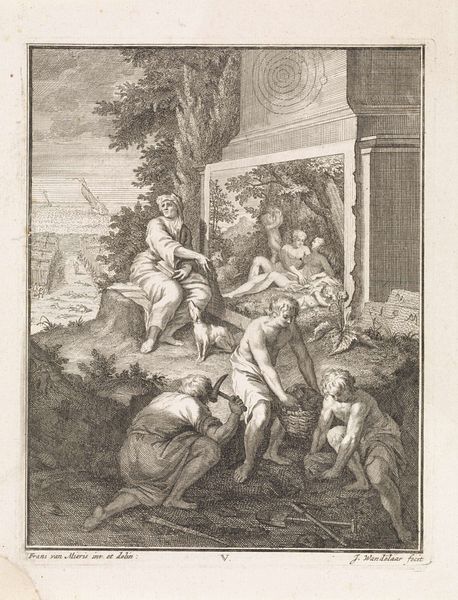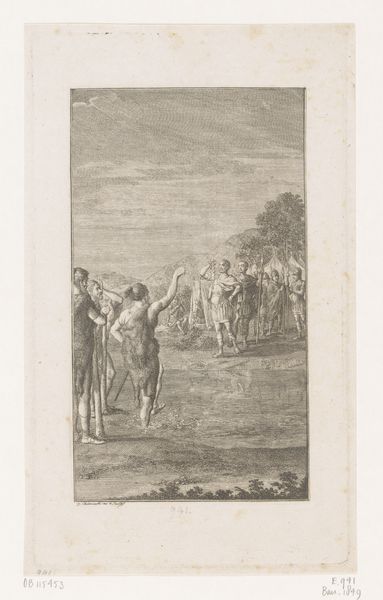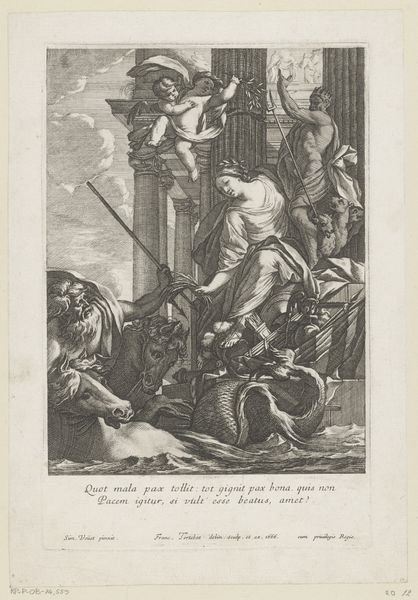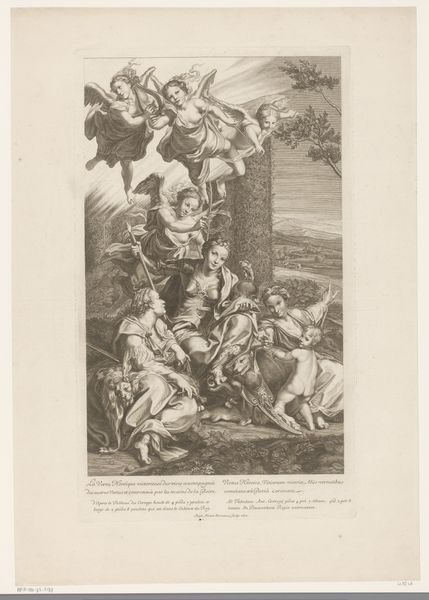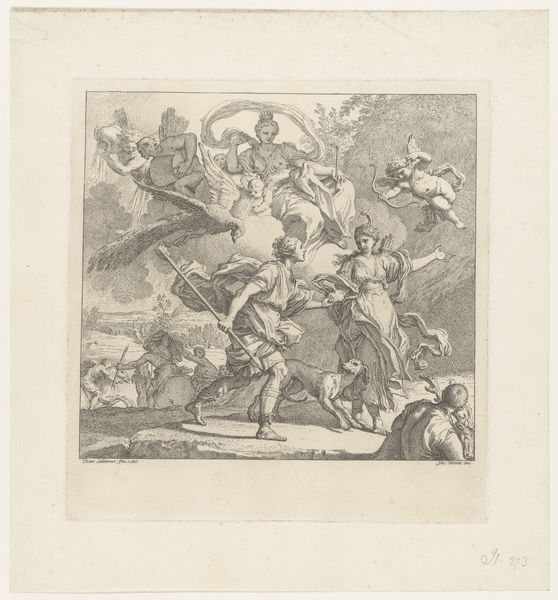
Dimensions: height 185 mm, width 115 mm
Copyright: Rijks Museum: Open Domain
Editor: This is "Friedrich Wilhelm gelauwerd en ge\u00eberd," an engraving by Daniel Nikolaus Chodowiecki, created in 1782. It's quite busy; a scene unfolds with many figures, including winged allegorical ones, surrounding a central royal figure. There's a definite Rococo flair, and I’m curious about the message it’s trying to convey. How do you interpret this work? Curator: Well, it is interesting to examine this image through the lens of public image construction. Look at the scene depicted; an idealised monarch amidst allegorical figures. Who is the intended audience here, and what message is Chodowiecki attempting to disseminate on behalf of the depicted royal subject, Friedrich Wilhelm? Editor: The intended audience probably consisted of wealthy merchants or nobility of the time. The engraving perhaps suggests Friedrich Wilhelm's importance. Is there a political message that an engraving might communicate, compared to, say, a painting during this period? Curator: Absolutely. Engravings were easily reproducible. Therefore, prints had a wider circulation among various social strata. So the artist and patron likely wanted to associate Wilhelm with the classical motifs of laurel wreaths and prosperity to legitimise the existing social order. What is also important to note is how the print itself functions as a symbolic carrier of power. Do you think this portrayal accurately reflected the social and political reality of the time, or does it promote a more propagandistic viewpoint? Editor: I suppose it is a carefully constructed image to create a certain impression rather than presenting a factual record. Considering what you've highlighted, it suggests that the Rococo style was not purely decorative; in this instance it actively contributed to constructing a historical narrative. Curator: Precisely. Analyzing it in this light unveils how seemingly ornamental aesthetics played a significant role in shaping public perceptions of power and authority in 18th-century society. I find the cultural agenda of image creation to be an on-going dynamic that echoes across eras. Editor: It's certainly made me think differently about how images operate within broader social structures.
Comments
No comments
Be the first to comment and join the conversation on the ultimate creative platform.
